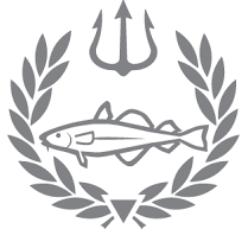 After a short break in the internship, I set off to Salem to work with Dr. Joe Buttner at the Cat Cove Marine Laboratory. Dr. Joe and Salem State College have been working with the Massachusetts Department of Marine Fisheries since 2006 to study methods to restore softshell clam (Mya arenaria) populations in the Boston Harbor and surrounding area. Upon arrival, a lab assistant showed me around the Cat Cove lab, where millions of softshells are raised from birth–when they are roughly the size of a grain of rice–until they are large enough (>10mm) to be seeded in the intertidal zone of nearby beaches. Dr. Joe explained how clams in these seeded plots not only reach maturity and full size quicker than normal but also attract softshells already in the ecosystem, further increasing the population density and reproductive rates at the seeded beaches. After touring the facility and going over the data collected so far in this program, I grabbed shovels, waders, buckets, and a pair of waterproof boots and hopped in a truck with Dr. Joe and three of his assistants to ride out to Quincy. We planned to sample softshell sizes from a series of plots seeded the year before, and were racing to take advantage of the low tide.
After a short break in the internship, I set off to Salem to work with Dr. Joe Buttner at the Cat Cove Marine Laboratory. Dr. Joe and Salem State College have been working with the Massachusetts Department of Marine Fisheries since 2006 to study methods to restore softshell clam (Mya arenaria) populations in the Boston Harbor and surrounding area. Upon arrival, a lab assistant showed me around the Cat Cove lab, where millions of softshells are raised from birth–when they are roughly the size of a grain of rice–until they are large enough (>10mm) to be seeded in the intertidal zone of nearby beaches. Dr. Joe explained how clams in these seeded plots not only reach maturity and full size quicker than normal but also attract softshells already in the ecosystem, further increasing the population density and reproductive rates at the seeded beaches. After touring the facility and going over the data collected so far in this program, I grabbed shovels, waders, buckets, and a pair of waterproof boots and hopped in a truck with Dr. Joe and three of his assistants to ride out to Quincy. We planned to sample softshell sizes from a series of plots seeded the year before, and were racing to take advantage of the low tide.
Once we made it to the beach I witnessed an impressive phenomenon; though the change at low tide was only expected to be -5 ft, the extremely flat profile of the beach we were at meant that, at low tide, almost a quarter-mile of the intertidal zone was exposed! When we arrived only a corner of the nearest plot was visible, but within minutes the first line of plots, which measured 12ft x 50ft, were completely exposed; I could actually watch the waterline visibly recede after each wave passed by. Of course, what goes out must come back in, so we set to work immediately to try and sample all the plots before the tide turned and came rushing back in.
At each plot, we randomly selected 3 one-square-foot samples to dig out; the mud from each was then carefully sifted out in a nearby outlet of water, and any live clams were counted and measured. The first plot yielded only one clam, but we struck gold on the next few plots, pulling out 20+ clams in each sqft sample. These clams varied in size from 30mm to 70mm, and we even managed to find a few live razor clams among all the softshells. Despite starting an hour and a half before low tide, we barely had time to gather samples from half of the plots before the water poured back in and threatened to wash away all our equipment. We returned to the truck as the sun set on a day of hard, dirty, but thoroughly satisfying work; the life of a Marine Biologist might not be glamorous, but I think the grin on my face was evidence enough that it can be quite enjoyable.
